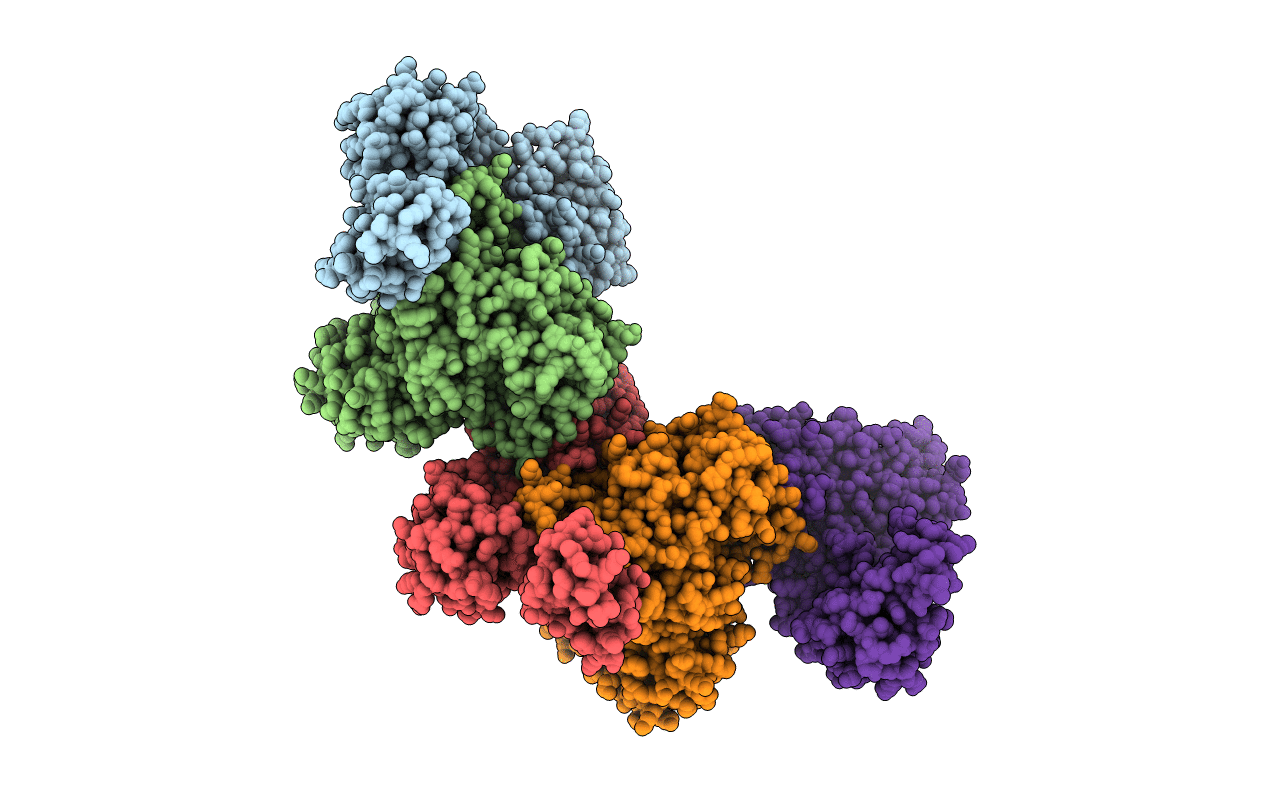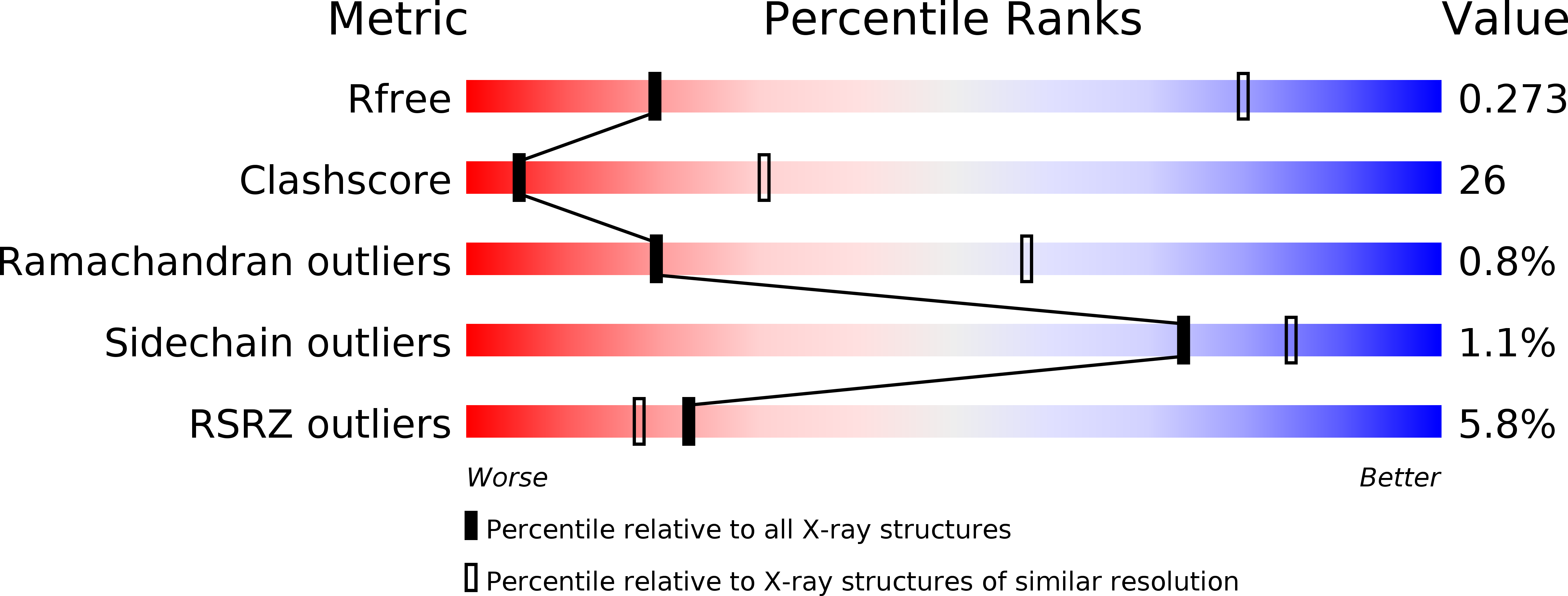
Deposition Date
2012-11-15
Release Date
2013-06-05
Last Version Date
2023-12-06
Entry Detail
PDB ID:
3W1H
Keywords:
Title:
Crystal structure of the selenocysteine synthase SelA from Aquifex aeolicus
Biological Source:
Source Organism:
Aquifex aeolicus (Taxon ID: 224324)
Host Organism:
Method Details:
Experimental Method:
Resolution:
3.89 Å
R-Value Free:
0.28
R-Value Work:
0.22
R-Value Observed:
0.22
Space Group:
P 41 21 2


